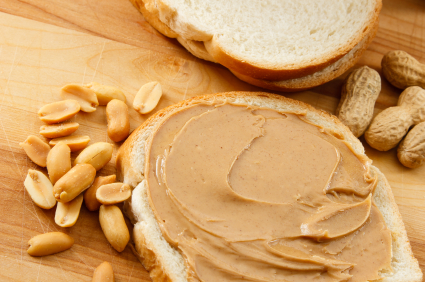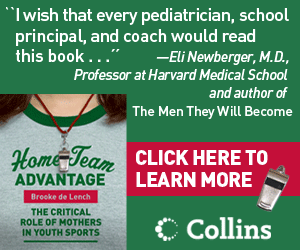Remember when the "eat fat, get fat" mantra was all the rage? Athletes avoided fat like the plague. They ate poached fish, dry salads, and steamed vegetables in efforts to reduce the risk of getting fat - to say nothing of having a heart attack.
Unfortunately for many low-fat eaters, dieting went awry. Fat-free foods left them unsatisfied, with gnawing hunger and a relentless drive for fat-free frozen yogurt (fat-free = calorie free, right?) or, what the heck, a pint of Ben & Jerry's Chunky Monkey ice cream. They ended up gaining (not losing) weight.
Nutrition professionals learned a lesson: advising Americans to eat less fat led to unintended consequence of eating more sugar. A big mistake. Hence, the new 2015 Dietary Guidelines recommend we include health-promoting poly- and mono-unsaturated fats in our meals-but still limit the artery-clogging saturated fats from greasy meats and fatty "junk" foods.

Given that Time magazine reported butter is back and the Paleo diet embraces coconut oil (high in saturated fat), athletes are left wondering whom to believe. Can we really eat bacon, burgers and other foods rich in saturated fats without hurting our health? This article addresses issues related to dietary fat and your sports diet.
What about coconut oil ... is it better than olive oil?
All fats contain a variety of mono-unsaturated, poly-unsaturated and saturated fats in varied proportions. The harder the fat (e.g. butter, beef lard) the more saturated it is. The softer/more liquid the fat (e.g. avocado, olive oil) the better it is for your health. Coconut "oil" (it is called an oil because it is from a plant, but is solid at room temperature) has some "good" fats, but it also has some "bad" fats. To date, research on the health risks or benefits associated with long-term intake of coconut oil is sparse. Hence, you should ask yourself, "Why would I want to trade extra-virgin olive oil (known to be health-promoting) with coconut oil (with questionable health claims)?"
What percent of my calories should come from fat?
The percent of total calories that should come from fat is whatever is left after consuming a foundation of grains, fruits and vegetables to fuel your muscles, and adequate protein-rich foods (lean meat, fish, beans, low-fat dairy, soy) to build and repair muscles. The percent of total calories from fat is less critical than the type of fat.
The 2015 Dietary Guidelines recommend that no more than 10% of calories come from saturated fat. That means, if you eat 2,000 calories a day (a reducing diet from most active people), you can choose 200 calories (22 grams) of saturated fat a day. Ideally, you will spend those fat-grams on foods rich in nutrients, such as 2% milk (3 g sat-fat per 8 ounces); reduced-fat cheese (3-6 g sat-fat per ounce), or hard-boiled eggs (1 g sat-fat per egg), instead of empty-calorie butter (7 g sat fat per tablespoon) or coconut oil (12 g sat-fat per tablespoon).
Unsaturated fats knock down inflammation. For athletes who damage muscles during hard exercise, reducing inflammation can enhance recovery. Hence, you want to eat health-promoting fats such as extra virgin olive oil, avocado, all-natural peanut butter, nuts, and salmon. They are not only anti-inflammatory, but also needed to absorb vitamins A,D,E and K. Plus, they help food taste better. Enjoying some healthful fat in each meal makes the meal yummier and more satisfying-and easier for you to reduce hankerings for decadent desserts.
NOTE: While unsaturated fats are health promoting, they are nevertheless calorie-dense. One tablespoon of oil (of any type) has about 120 calories. Eat fats in portions that fit within your calorie budget!
Are fat-free foods, like skim milk and fat-free salad dressing, wise additions to a sports diet?
The answer to that question depends on what other foods are in the meal. The goal is to not eat fat-free meals! That is, a fat-free breakfast of Cheerios and skim milk can leave you feeling "unfed" and hankering for a donut or two by 9:30 a.m. In comparison, choosing 2% milk for the cereal could help you feel satiated. Better yet, add whole grain toast with all-natural peanut butter to the breakfast and you will be truly content. Similarly, a salad with fat-free dressing can leave you hankering for cookies, unless you toss in some quality calories, such as avocado, chopped walnuts, tuna and extra-virgin olive oil. Including some health-promoting fat in each meal and snack can actually help save you calories in the long run if it calms the cookie monster.
Should I avoid peanut butter because it is so high in fat?
No! Research suggests people who eat nuts and peanut butter are not fatter than people who avoid those foods. While the majority of calories in peanut butter do come from fat, the good news is the fat is primarily poly- and mono-unsaturated (only 1 g sat-fat per tablespoon of all-natural peanut butter). Peanut and other nut-butters protect against heart disease and diabetes, two diseases related to inflammation. Like all fats, enjoy nut butters in portions that fit within your calorie budget.
I consider peanut butter to be one of the best sports foods (and diet foods) around, not just because it knocks down inflammation, but because it is yummy and satiating. That is, a lunchtime low-fat turkey sandwich leaves me hankering for dessert, but a peanut butter and honey sandwich leaves me feeling satiated for several hours; no snacks needed!
The bottom line: Enjoying health-promoting unsaturated fats in your sports diet reduces inflammation, enhances absorption of certain vitamins, helps curb the appetite - and adds yumminess. Just don't overeat calories from fat-or from any type of food, for that matter. The mantra Eat excess calories, get fat is more accurate than Eat fat, get fat.
Sports nutritionist Nancy Clark MS RD CSSD is a longtime MomsTEAM expert contributor and has a private practice in the Boston-area (Newton; 617-795-1875), where she helps both fitness exercisers and competitive athletes create winning food plans. Her best-selling Sports Nutrition Guidebook, and food guides for marathoners, cyclists and soccer players, as well as teaching materials, are available at www.nancyclarkrd.com. For online workshops, visit www.NutritionSportsExerciseCEUs.com. You can follow Nancy @nclarkrd.









